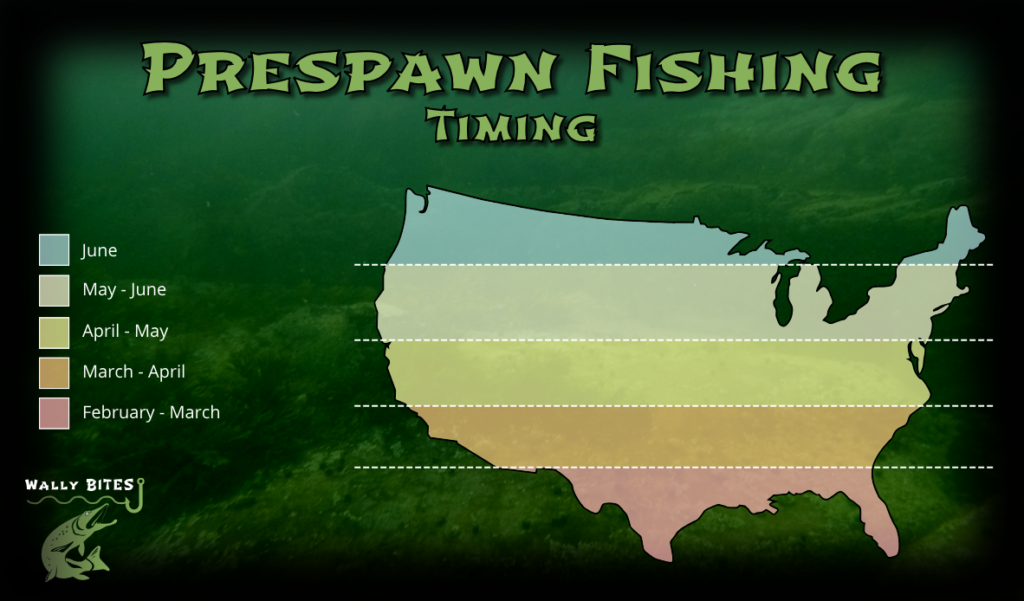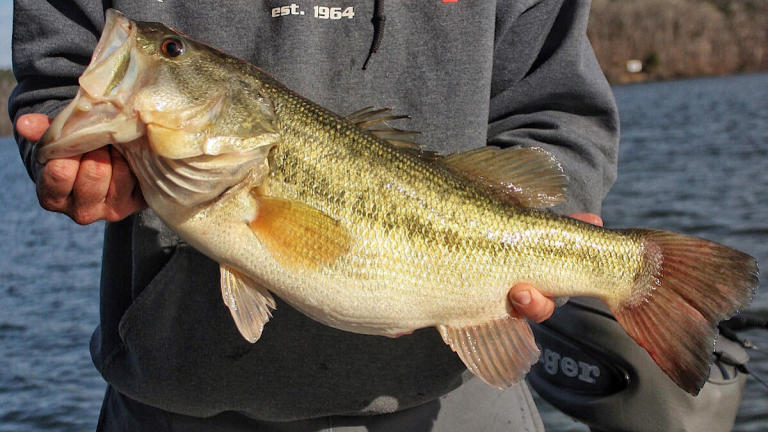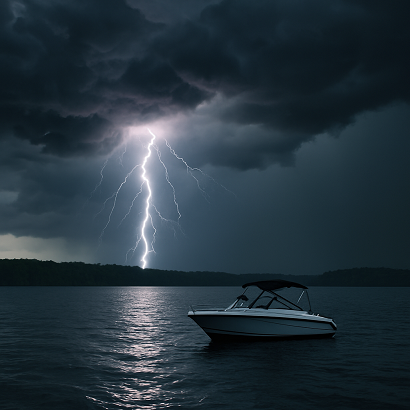While it’s been great for ice fishing at Lake Wallenpaupack, as we near the tail end of the winter season it’s worth reminding you that prespawn fishing is PRIME TIME for hauling in some big large and smallmouth bass. Prespawn bass are just coming out of a long winter, at their heaviest weight in a long time, and are known to be extremely aggressive in terms of strikes. They need to eat and build body mass before spawn.
As exciting as it may be to get out there and go fish ’em, prespawn bass can also be extremely difficult to find. Identifying their patterns is not easy as they are constantly on the move — combined with the never changing outside variables: weather and water level from snow melt.
Challenge #1: The When

It’s common sense that bass will spawn at different times depending on your geographic location. For example, in Florida the prespawn season is best during late winter (you lucky SOBs) and you can get out there as early as February to start slaying them. While the map above is a nice guide, it’s important to remember that what it really boils down to is water temperature rather than a specific date range. So, what’s the magical green light?
Bass typically start their prespawn hunting once the first real stretch of climbing water temps hits the Lake. In our area (northeast) this usually means you will want to look for a rise in water temps from the low-to-mid 40s into the mid-50s. Chilly, I know! Unsure of the current water temps at Lake Wallenpaupack? Check out our daily water temperature readings and save yourself the trouble.
Challenge #2: Where
At Wallenpaupack, you will want to look for the edge of grass and weed beds, points (especially those with shallow shelves beneath them), and any other structures that are in and around shallow flat areas. This is prime bedding ground for our beloved fish.
Avoid throwing your line directly into their beds. Instead, focus on the flats and areas around the beds as prespawn bass will most likely move into these areas to grab a quick bite in an attempt to try and fatten up before going to lay down.

Challenge #3: How
One of the biggest keys to unlocking the mystery that is prespawn bass is to know the lay of the land. Study the map prior to even getting on the water. If you have a good contour map, you can easily identify the areas you will want to target in order to focus your efforts. In our lake, you can use aerial photography like google earth to locate backwaters and grassy flats from the summertime, and focus on them before the grass comes up.
OK – so you found the right area. Now what? The key is to start out with reaction baits that will trigger a strike. You’ll want to cover a lot of water. Once you locate an area that holds fish, switch over to something slower. Finesse and patience will be the key to success.
Be a Responsible Fisherman
Let’s not ignore the elephant in the room. This is a controversial subject, after all. Should anglers be fishing for bass that are in beds? Is it right or wrong?
Catching and immediately releasing a spawning bass does little apparent long-term harm to the fish. If released carefully and quickly, these fish usually return to the nest and resume guarding the eggs or fry. However, if hold that fish out of water for an extended period while your fishing buddy fumbles for the camera you will induce stress. A stressed fish may return to its nest but may be unable to defend it against predators. Or it may not return at all.
Lastly, and most obviously, a fish that is transported miles away to a weigh-in is not likely to return home to save the brood. We practice what we preach — catch and immediate release!
#TightLines – Thanks for reading!


